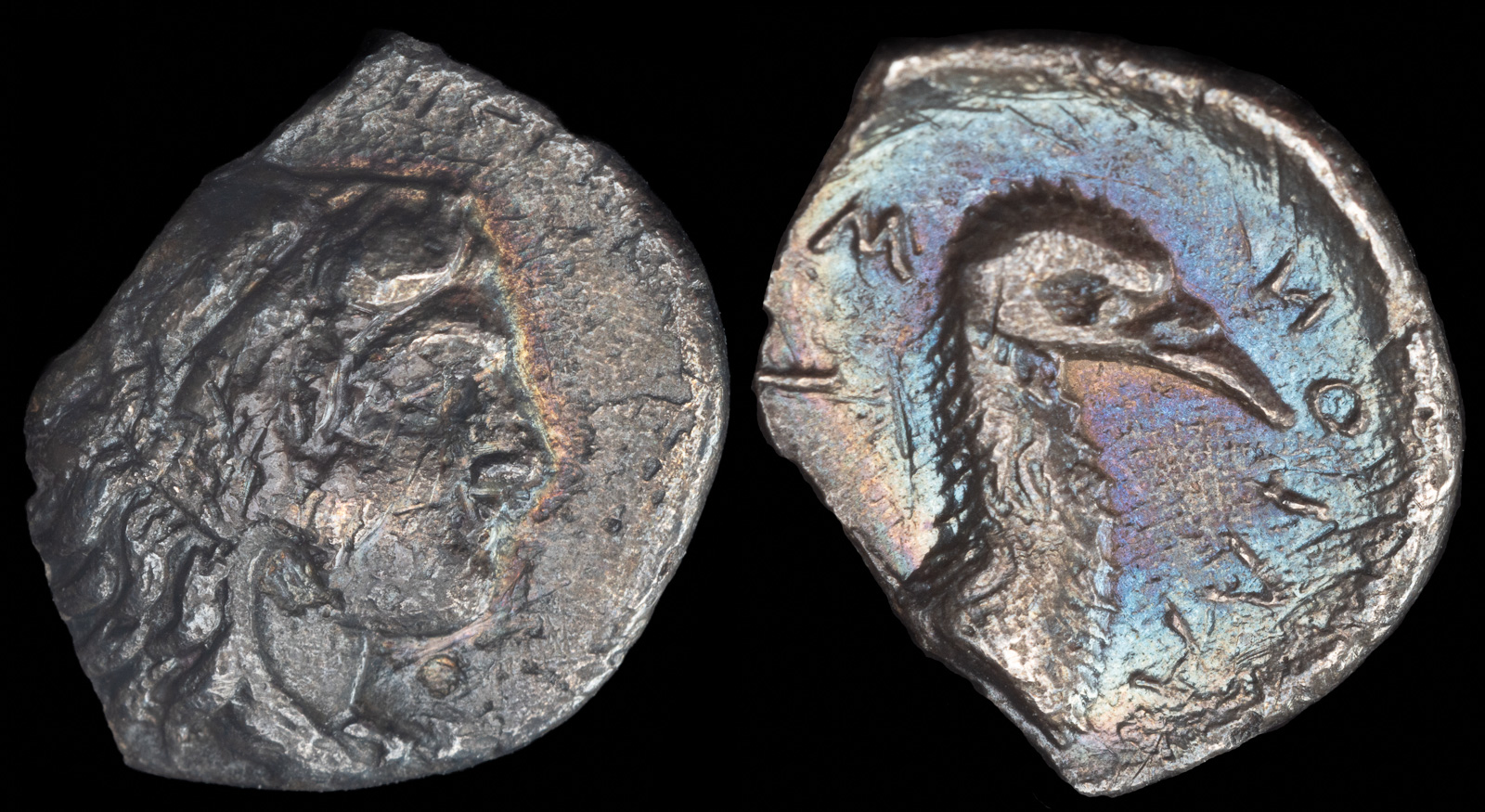
Arkadia, Stymphalos
Circa 350-345 BCE
AR Obol 11mm, 0.66g, 6h
Head of Herakles to right, wearing lion skin headdress
Rev. ΣΤ[ΥΜ]ΦΑΛΙΟΝ (retrograde) Head of crestless water bird to right
BCD Peloponnesos 1703. SNG Copenhagen 286
Ex Collection of Jonathan H. Kagan
Although I wouldn’t label myself as a “birder”, the pastime of going into the field and identifying birds goes back further than the texts describing it. One such avid birder was none other than the Greek hero Herakles. Here he’s depicted on this coin along with his favorite bird.
We don’t know today exactly what type of bird was at Stymphalos, but per Pausanias (who never saw one), they were about the size of a crane but with a body shape closer to an Ibis, only the beak was straight. Their beaks were of bronze and capable of piercing the armor and shields of any foolish hunters. If that wasn’t enough, they could launch their metallic feathers at people like daggers.
The Stymphalian birds made their home at Lake Stymphalos, near the city of Stymphalos that minted this coin. There, they fed on fish, rodents, stray dogs, and children. Clearly they were a problem for the villagers, who put out an ad for a hero to rid them of this scourge. Enter Herakles.
The hero took out his binoculars and astutely remarked that the birds made their home in the center of the lake, which bode poorly for his chances against them. So, he pulled out his phone, went to Athena.com (then under a different owner), and found a cool rattle forged by Hephaistos himself. After delivery by an Amazon, he lumbered up to high ground and used his new contraption to scare the daylights out of the flock.
They took flight, but to ensure they didn’t return, he pulled out his trusty Ares & Wesson compound bow, dipped the arrows in the blood of the Hydra he’d conveniently brought along, and took out a good number of them. The remainder were rumored to head to the Black Sea (then called the Euxine) where they later tangled with the Argonauts (before they moved to Toronto).
This coin has long been at the top of my wish list, and I counted seven failed bids before I finally acquired this one. Although it’s chipped, which I suspect was caused by an ill-fated visit to the birds themselves, the important pieces are all there and I really love the detail on the bird, the toning, and that most of the inscription is present and legible.
It comes from the collection of Jonathan Kagan, who from what I can tell is an investment manager who started collecting ancient coins and then moved to 19th century paintings. The painting collection was recently auctioned by Christie’s.
Lake Stymphalos is still a good location for viewing migratory birds, so who knows, perhaps someday a birder will receive a most unexpected lifer. In the meantime, I checked Ebird and found no sightings. Of the ancient city, an aqueduct from the time of Hadrian and the scattered remains of a few buildings remain, but on my trip to the Peloponnese I didn’t stop. When I look at photos now, that seems a bit of a shame, since the expanse does look scenic.
Arkadians under Aineas of Stymphalos march to Sikyon and send Euphron into flight.
Apollonides, a general of Kassander, takes Stymphalos.